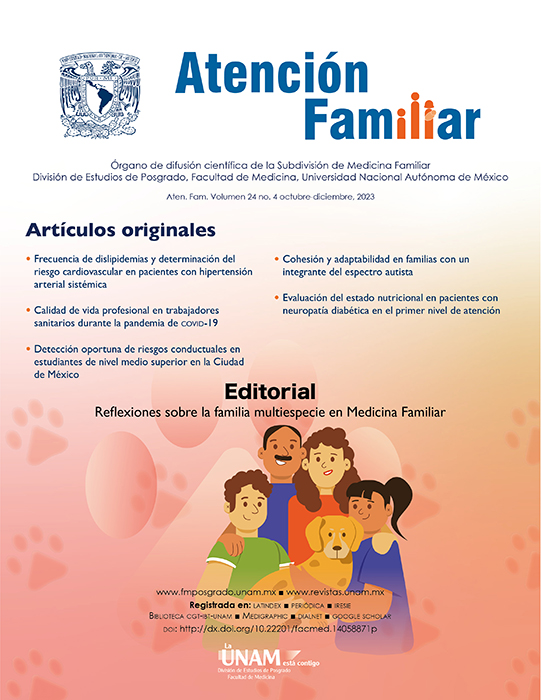Cohesion and Adaptability in Families with a Member on the Autism Spectrum
Main Article Content
Abstract
Objective: to evaluate cohesion and adaptability in families with a member with autism. Methods: descriptive cross-sectional study, a sampling by convenience was used. After signing an informed consent form, 20 parents in charge of children and adolescents with autism, assigned to a family medicine unit, were interviewed. Sociodemographic data and socioeconomic status were collected using the Graffar Méndez Castellanos tool, and the Family Adaptability and Cohesion Evaluation Scale (faces III) was used to evaluate family functionality. Data were processed in the Excel program version 2019, descriptive statistics were performed, and tables and graphs were designed to synthesize the results.
Results: the average age of the members with autism was 12 ± 2.12 years, the average age at diagnosis was 5.7 years, and 2.7 years of delay in diagnosis. Regarding cohesion, a higher frequency of related and flexible families was obtained for adaptability. In functional families, the middle socioeconomic stratum predominated, while in dysfunctional families, the middle and upper middle stratum. Dysfunctional families were observed in 55% of the cases, with a higher prevalence of chaotically related families.
Conclusion: dysfunctional traits were observed in most of the surveyed families.
Downloads
Article Details
Citas en Dimensions Service

This work is licensed under a Creative Commons Attribution-NonCommercial-NoDerivatives 4.0 International License.
